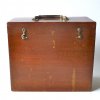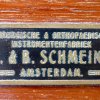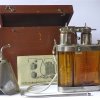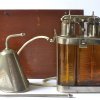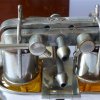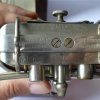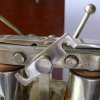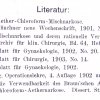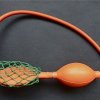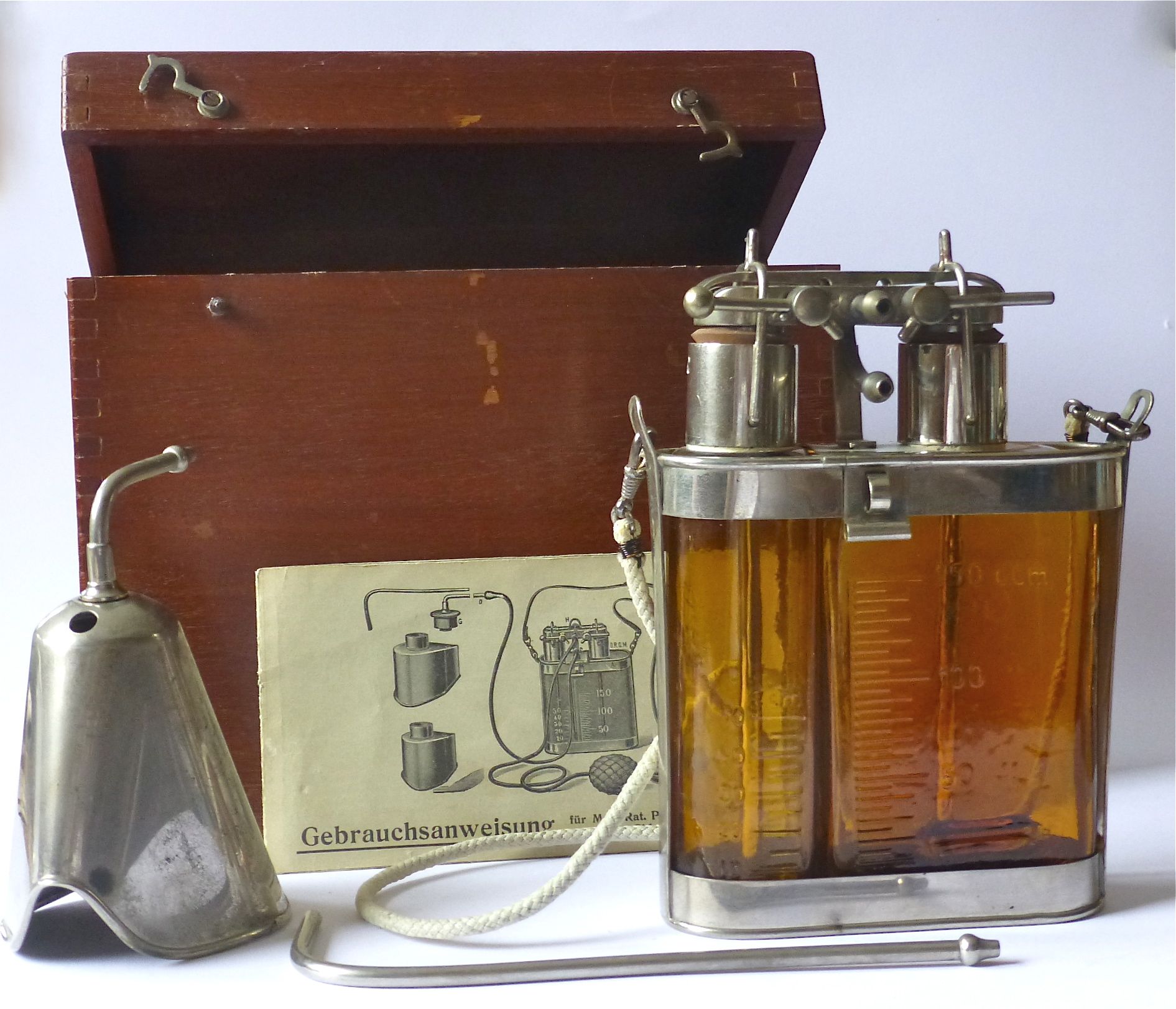|
During his studies, Heinrich Friedrich Wilhelm BRAUN (1862-1934) performed in the surgical department under Prof. Carl Thiersch (1822-1895, surgeon in Leipzig) and - still a student - performed anesthesia. This experience developed with him the interest in anesthesia and its practical application.
Under the influence of a fatal accident with chloroform in the late 1890s, he dealt with so-called mixed anesthetics in which chloroform and ether were mixed: by combining 2 vapors, the dosage of each individual could be reduced and the likelihood of side effects reduced accordingly. Starting from the devices of Junker v. Langegg, von Kappeler and Hewitt BRAUN 1897 developed a handy device, which he gave the name "NARKO". In it a 150 ml ether and a 50 ml chloroform glass were combined and connected with hoses so that the gases could be mixed. Via a rubber balloon, a stream of air was passed over one or both vessels and led to the patient. When the taps were wide open, a gas mixture of 1% by volume of chloroform vapor and 4% by volume of ether vapor flowed out. The rubber tube blower with double balloon (pump ball with valve, blower ball with safety net) was borrowed from the micro hot air burner from Holländer. The device was presented at the 30th Congress of the German Society of Surgery on April 11, 1901 in Berlin - the Berlin Waarenhaus (catalog p.60, without illustration) offered it in 1910 for a proud 50 Reichsmark. There was the device with face mask, for the nasal and the pharyngeal application and for the operation with the foot. For the patients, it brought a hitherto unknown safety in anesthesia. This explains why the easy-to-use devices were in circulation until the 1940's, before they were finally replaced by the more complex (and heavier) oxygen anesthesia machines.
Production: the Leipzig medical device company C.G. Heynemann, Franz-Flemming-Strasse 23 produced the apparatus. Presumably, the copy presented here in the branch of the Fa. Schmeink in Antwerp was sold and therefore provided the lid of the mahogany box with the label of this company.
The device presented here has a moving past. It was given in 1990 to the anesthesiologist Prosper KAYSER by a Dutch colleague on the occasion of the 25th anniversary of the existence of an anesthetic department at the Zitha Clinic in Luxembourg. KAYSER passed it on to Museum SYBODO in August 2014. Special thanks for the generous gesture!
The Braun ether-chloroform vaporiser was very frequently used during the first fifty years of the 20th century, mainly in the German speaking region. This primacy was principally involved by the simple management, the universal possibilities of application and the "expedient" combination of ether and chloroform: this term means the differential employment of these two substances for conducting individual anaesthesia. Heinrich Braun had published his method after extensive experimental studies, here briefly referred to; further reasons for the considerable success of the apparatus are discussed.
Lit.:
- Brandt, Ludwig, Illustrierte Geschichte der Anästhesie, Wissenschaftliche Verlagsgesellschaft Stuttgart 1997 S.132.
- Braun, H., Ueber Mischnarkosen und deren rationelle Verwendung (pp.136-170, 4 Abb.), in: Verh. Dtsch. Ges. Chir., 30. - Berlin 1901, 8°, LXIV, 222, 800 pp., Abb., 7 z.T. farb. lith. Taf..
- Braun H., Ueber Mischnarkosen und deren rationelle Verwendung. Arch Klin Chir 1901; 64: 201-235.
- Goerig, Michael, Die Entwicklung des Narkosewesens in Deutschland, Steintor Verlag 2012 SS. 71-74.
- Kühn, Curt, Ueber 200 Narkosen mit dem Braun'schen Aether-Chloroformgemisch, 1903, 21 Seiten
- Narko: Apparat zur Aether-Chloroform-Mischnarkose nach Geh. Med.-Rat Prof. H. Braun; neues verbessertes Modell mit Luftstrom-Verteiler. C.G. Heynemann Fabrik Ärztlicher Instrumente, Verlag B . Georgi, 1902.
- Weisser C., The Braun apparatus for mixed ether-chloroform anesthesia. A contribution to the early history of combination anesthesia, in: Anaesthesist. 1983 Aug; 32(8):369-73.
|




